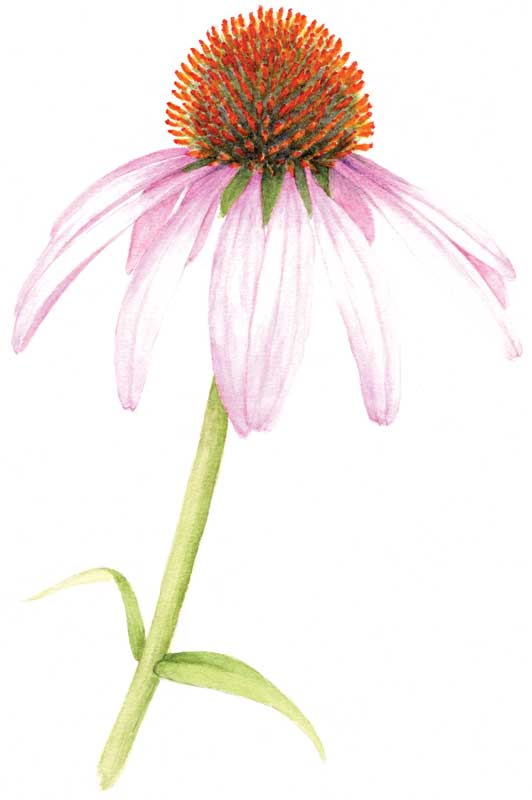Welcome Downeast
The Town, the Bays, the Mountains
Dear Friends:
As the thunder of the grand finale fades from the Fourth of July fireworks, we feel summer slipping in and surrounding us. Warm and humid air comes in on a south wind bringing foggy mornings and hot, muggy afternoons. Then, thunder showers pound down under towering clouds from the north cooling the earth and giving it a drink. Wild flowers nod lazily in the breeze and trees show the undersides of their leaves as the showers move in. Everything is green and lush, like a touch of Ireland in Maine on these early summer days. Birds are quieter now as they busily tend their nests and feed their hatchlings. Deer graze happily in their shiny new summer coats.
For those of us who winter over here, it is not just another season. It is more like a different planet we inhabit these days. The hardships of winter fade in our memories as we look around in wonder, and walk barefoot in the garden.
Natural events, July
We are seeing a turning point in the growing season as more and more plants turn their energy from leaf to seed. For the most part, they devote the early weeks of the season to growing new leaves and stems, but once the bloom emerges, it’s all about producing seeds for the future. For us, flowers are about our own pleasure and enjoyment in the present as we marvel at their beautiful shapes and colors and aromas. But for the plants, flowers are all about survival into the next generation, ensuring that more of each kind will flourish next year and in years to come. How mysterious and holy Nature is! We may think of survival as demanding persistence, grit, toughness, and even violence, but plants guarantee their own survival with ephemeral beauty, softness, fragrance, and vulnerability. What is more fragile and fleeting than a flower? And yet, plants bet their survival on their delicate blossoms, and as a result, they own the world.
Freshwater report
Green frogs and bullfrogs call from the ponds while snapping turtles ever so slowly cross the roads seeking suitable places to lay their eggs. Give snappers the right of way; they have earned it by being here first, by several million years.
Field and forest report
 Illustration by Candice Hutchison
The more delicate spring flowers have faded at the coming of the heat, making way for the tougher high summer blooms of black-eyed Susan, Queen Ann’s lace, magenta fireweed, and sweet-smelling valerian. The valerian, also called heliotrope in these parts, is a gift to the harried native and the frenzied rusticator alike. Its dreamy, soporific odor has a calming effect on both townie and tourist leading them to forget what it was they were so anxious about just a moment ago. For centuries, valerian root has been recognized as an herbal remedy for anxiety. It is no wonder that the modern pharmaceutical Valium is derived from this plant.
Illustration by Candice Hutchison
The more delicate spring flowers have faded at the coming of the heat, making way for the tougher high summer blooms of black-eyed Susan, Queen Ann’s lace, magenta fireweed, and sweet-smelling valerian. The valerian, also called heliotrope in these parts, is a gift to the harried native and the frenzied rusticator alike. Its dreamy, soporific odor has a calming effect on both townie and tourist leading them to forget what it was they were so anxious about just a moment ago. For centuries, valerian root has been recognized as an herbal remedy for anxiety. It is no wonder that the modern pharmaceutical Valium is derived from this plant.
Fireweed (Chamaenerion angustifolium), with its tall spires of bright magenta flowers, has a fascinating story. It gets its common name from its ability to rapidly colonize burned over areas with its wind-borne seeds, and is well-known for this throughout Canada and the northern United States. In Britain after World War II it was called “bombweed” for its habit of being the first plant to appear in bombed-out areas.
The seeds grow in long, narrow reddish pods along the tall stalks after the flowers fall. The pods open to release myriads of seeds each equipped with a silken sail, much like milkweed. These seeds find their way to bare soil where new fireweed plants appear and spread in thickets by underground roots which have the added benefit of slowing erosion. In some places fireweed has been intentionally planted in clear-cuts to hold the soil and to provide shade and cover for pioneering seedlings and fauna. A plant both beautiful and beneficial.
Natural events, August
Blueberry harvest is underway and it is hard work. Being mostly bent over all day and carrying heavy five-gallon buckets to the winnowing machines is not for the weak, or for those who spend their lives in tall buildings. But of course, blueberries are good for you, and there are few fruits on earth that can match the taste of fresh, wild blueberries from far out on the lonely barrens.
Many different varieties of goldenrod (Solidago spp.) are coming into bloom as is ragweed (Ambrosia artemisiifolia) with its filigreed leaves and green flowers causing hay fever miseries. Coincidentally, eyebright (Euphrasia spp.), known for its anti-allergy properties, is coming into bloom along the pathways with tiny white flowers tinted with purple on short stems with even tinier dark green leaves.
The Dog Days of summer could also be called the Cricket Days as these charming chanters enter their glistening adult stage and sing endless love songs to each other, reminding us that summer is far from over and there is still plenty of time for splendor in the grass. Yellow-banded grasshoppers click-clack back and forth in front of us as we amble and saunter through the fields.
Salt marsh events
The great salt marsh (Kci-Peskiyak in Passamaquoddy) where the Passamaquoddy people have gathered sweet grass for centuries, lies between Passamaquoddy Bay and Cobscook Bay along the Sipayik Trail. High summer adorns the trail with tall meadow rue, also called king-of-the-meadow, which can grow shoulder high with feathery white blossoms and oval or paw-shaped bi-pinnate leaves. Sweetgrass is identified by its satiny yellow-green leaves and beguiling vanilla-like aroma, and is used for ceremony, basket-making, home decoration and the like.
Field and forest report
Roadsides are abloom with the fluffy, fuzzy, rose-pink flowers of rabbits foot clover (Trifolium arvense) which loves dry sandy places and, like other legumes, improves the soil in which it is rooted by fixing nitrogen from the air into the dirt, and thus helps other plants move in. A good neighbor, for sure, and cute.
Clovers with white, purple, pink, and yellow blossoms appear every summer, too. Clovers are immigrants from Europe and Asia and their benefits are great. In addition to improving soil, they are irresistible to bees and make excellent silage, fodder, and pasture for livestock. You can also pull out the petals of purple clover and suck the sweet nectar out of them, as many a child has done.
 Illustration by Candice Hutchison
Illustration by Candice Hutchison
Saltwater report
Just below the surface, mackerel are fleeting and flashing silver flanks to the sun. Schools of these blue striped Atlantic mackerel are running again, and the pier is full of eager people casting lines off the sides, hoping to hook this sleek and beautiful swimmer. It is one of the easiest fish to catch and very healthy to eat, being high in vitamin B12 and omega 3 fatty acids, and very low in mercury. They are also a beautiful fish with sparkling silver and blue sides, graceful shape and large lucid eyes.
Gulls, terns, and cormorants throw back their heads as their own catch slides slick down their throats. Sandpipers and yellow-legs strut along the shores, raising their feet as off a hot sidewalk, then fly off all piping together in squadrons skimming over the waves.
Hot weather has also warmed the waters of the Gulf of Maine enough that it’s possible for the hardier among us upright primates to take a dip and even swim a few strokes in the saltwater. The sensation is cleansing and refreshing as the astringent salt stings in every little cut and scrape and the cold flushes the skin and sets the heart to pounding.
Sweet, bright, hot, moist summer: Wondrous summer.
Wildlife report
Out there, the young of this year’s generation of birds of the air and beasts of the field are coming into their own: raccoons, skunks, geese, loons, eiders, squirrels, hares, deer, moose, coyotes, wolves and cougars. They leave the nests and the dens that their parents created for them. They set out on bright new wings and sleek young legs strengthened by the food given them by their parents. They are covered in soft fur and feathers fledged out smooth by the sustenance of their forebears. They go out to make new lives for themselves, building nests and homes of bio-degradable materials, fully in tune with their environment. They gather food from entirely organic, renewable and sustainable resources, throw nothing away and haul nothing to the dump. They do not litter or pollute, and leave utterly invisible carbon foot-prints. They bravely face the world as it is, not as they would wish it to be, surviving and thriving in perfect balance with the wisdom of the Creation, as they have for tens of thousands of generations. They have no selfish genes, only selfless genes. They have little knowledge, but much wisdom. They were here long before we came; and they will be here long after we are gone: unless we learn to get back to the garden.
Rank opinion
Humans have developed and evolved into magnificent creatures, the like of which has never been seen on earth. We have created a vast and magnificent variety of music, perhaps the most sublime of all human accomplishments. We have learned to heal ourselves and other creatures, and have learned to amplify food from common plants and animals. We have created countless volumes of literature, art, and history over thousands of years. What we have not learned to do is to say No to ourselves, or to take No for an answer, even when it comes from the embedded wisdom of the collective Creation that some call God. Until we learn this, our survival will remain as uncertain as that of the youngest fledgling fluttering off from the edge of the nest on bright and hopeful wings.
Mountain report
A crowd went up Awanadjo (Blue Hill Mountain) to watch the rising of the Full Buck Moon and was greeted by a breath-taking display of lunar virtuosity. The moonrise over the bay was striking with its warm light tinted orange and pink reflecting on the still waters. Who says there is no such thing as magic? We live in absolute grandeur and beauty along these astonishing shores.
Seedpod to carry around
From Mary Oliver: “I tell you this to break your heart, by which I mean only that it break open and never close again to the rest of the world.”
That’s the Almanack for this time. But don’t take it from us—we’re no experts. Go out and see for yourself.
Yr. mst. humble & obd’nt servant,
Rob McCall.
✮
Rob McCall (1944-2023) lived in Brooklin, Maine. The selections in this almanack were excerpted from his archives.
Related Articles
Share this article:
2023 Maine Boat & Home Show

Join Us for the Maine Boat & Home Show!
Art, Artisans, Food, Fun & Boats, Boats, Boats
August 11 - 13, 2023 | On the waterfront, Rockland, Maine
Click here to pre-order your tickets.
Show is produced by Maine Boats, Homes & Harbors magazine.















